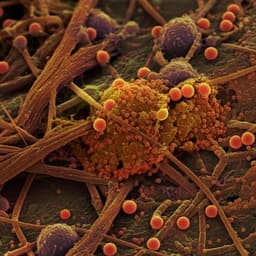
Earth Sciences
Microbial contribution to post-fire tundra ecosystem recovery over the 21st century
N. J. Bouskill, Z. Mekonnen, et al.
Tundra ecosystems are facing an increase in fire frequency. This research, conducted by Nicholas J. Bouskill and colleagues, reveals that the nitrogen cycle accelerates post-fire recovery due to complex microbial interactions, significantly enhancing plant productivity through nutrient release. Discover the implications of these findings for ecosystem models and nutrient cycling.
~3 min • Beginner • English
Related Publications
Explore these studies to deepen your understanding of the subject.







